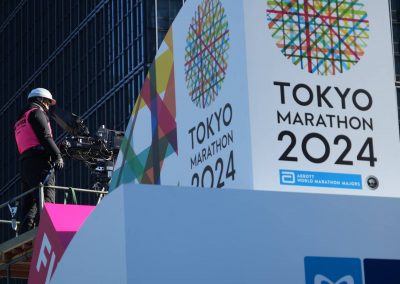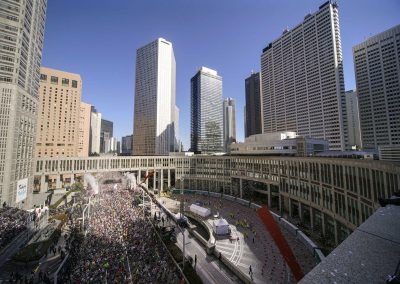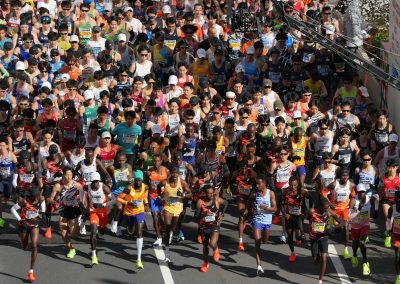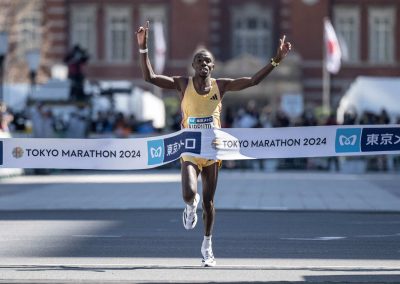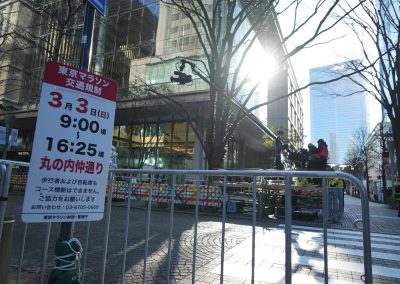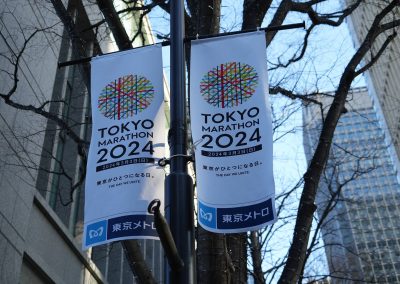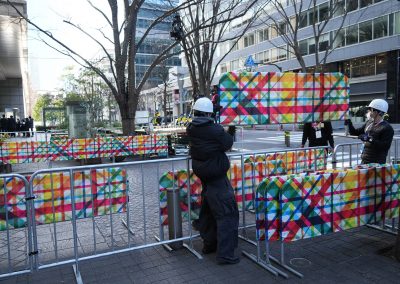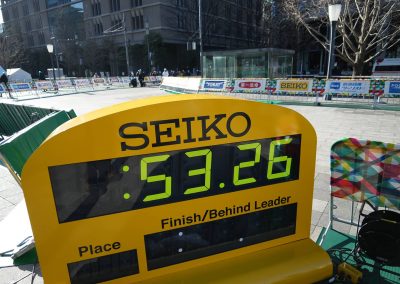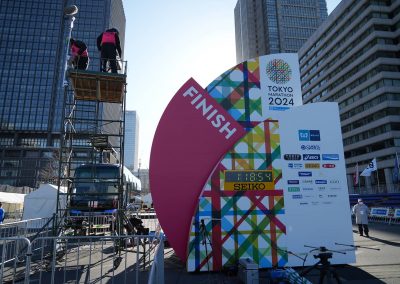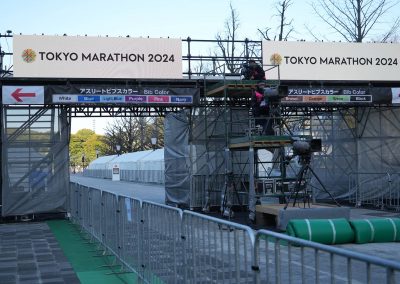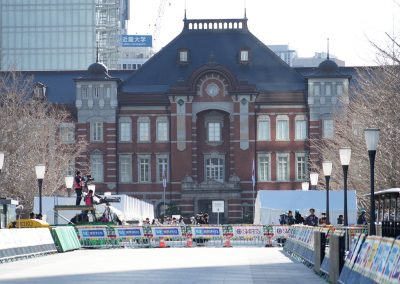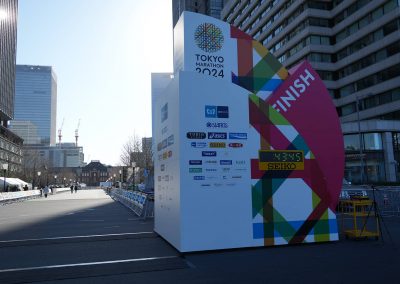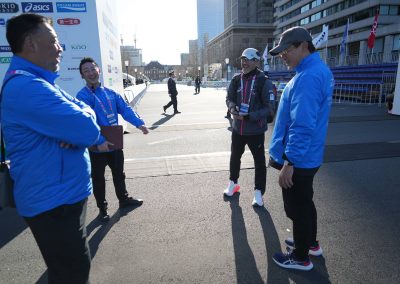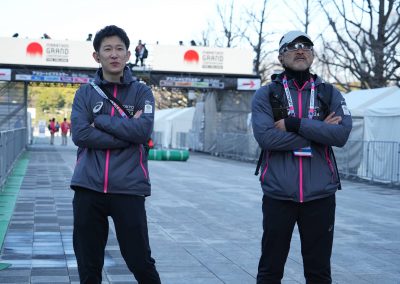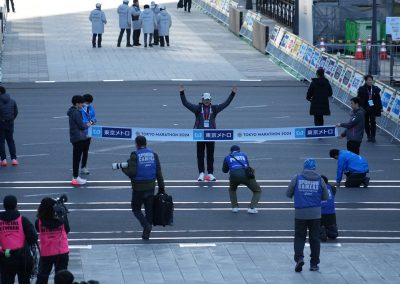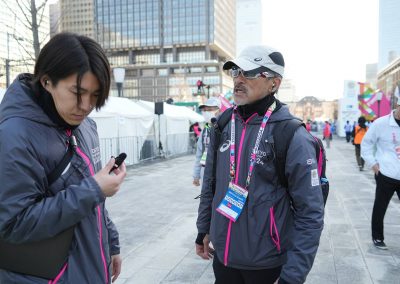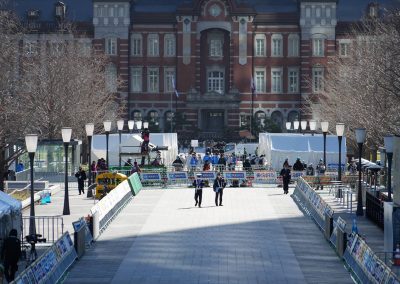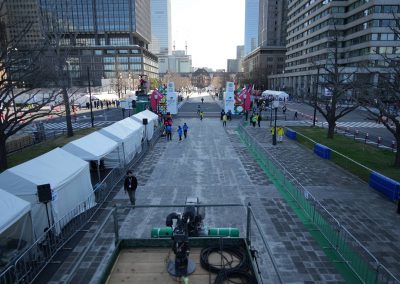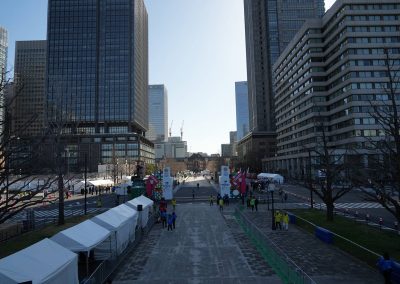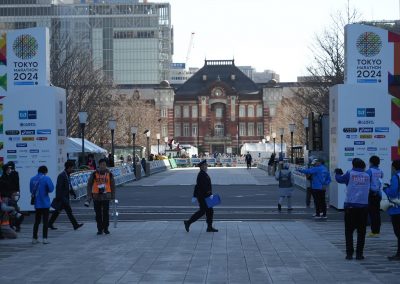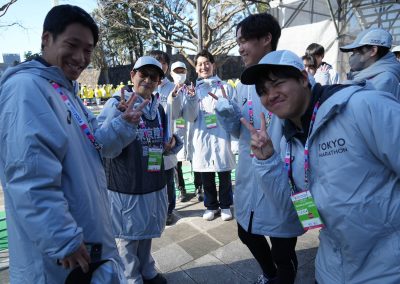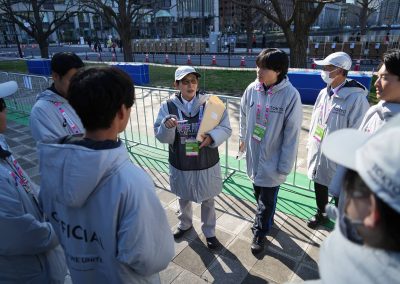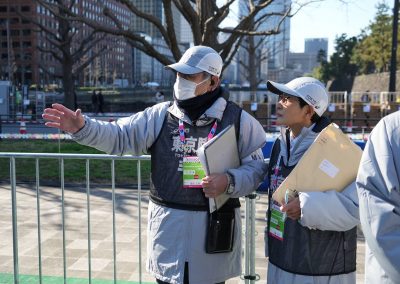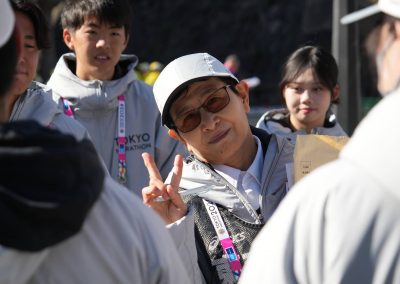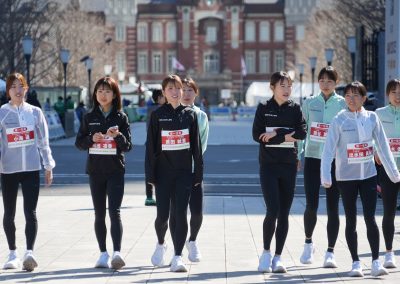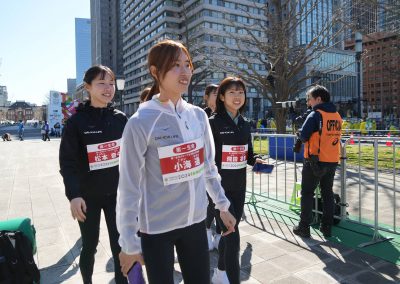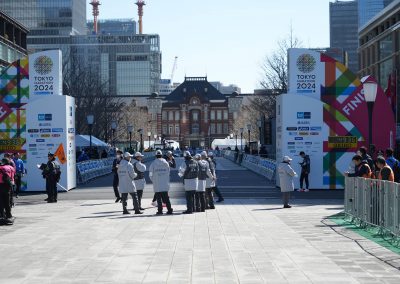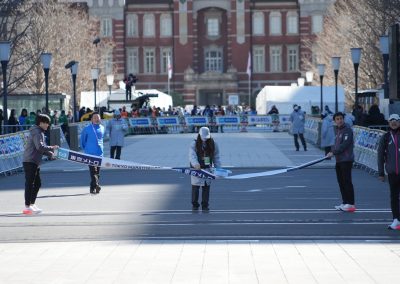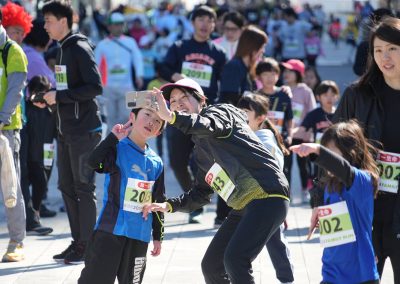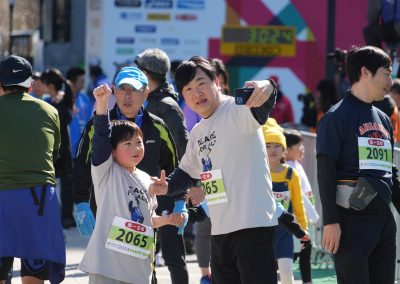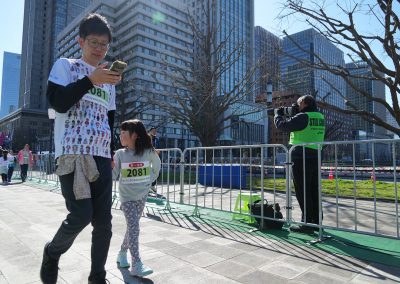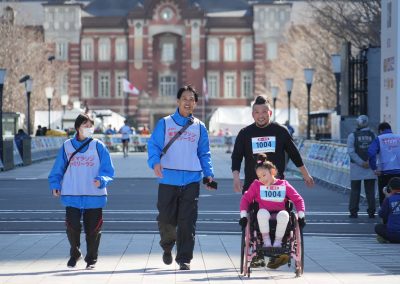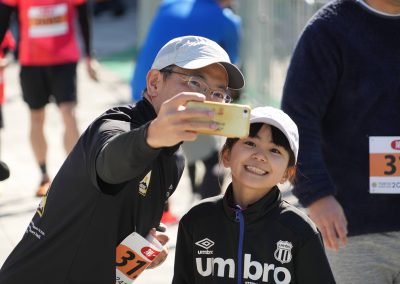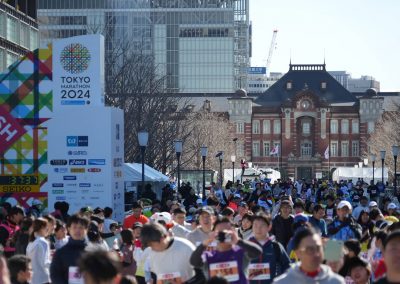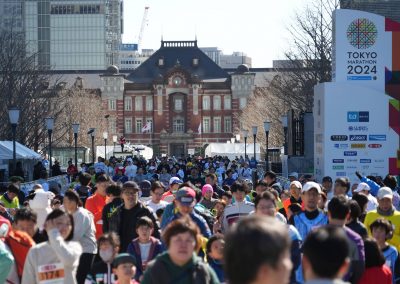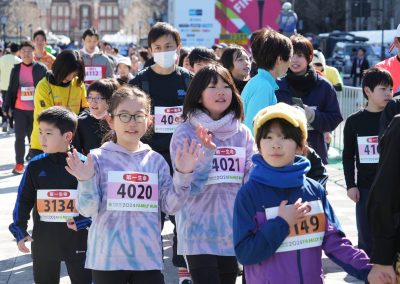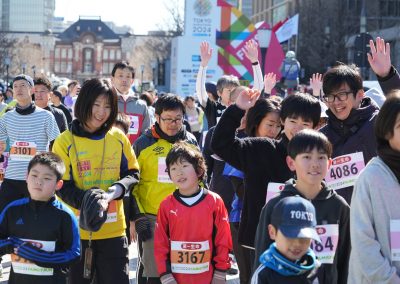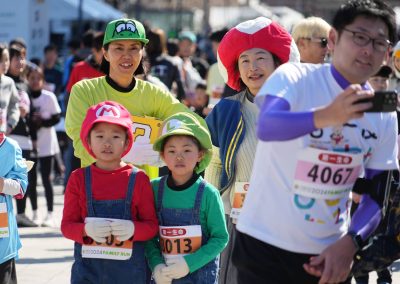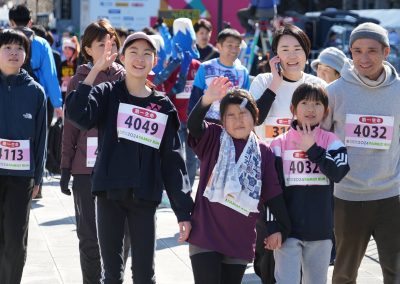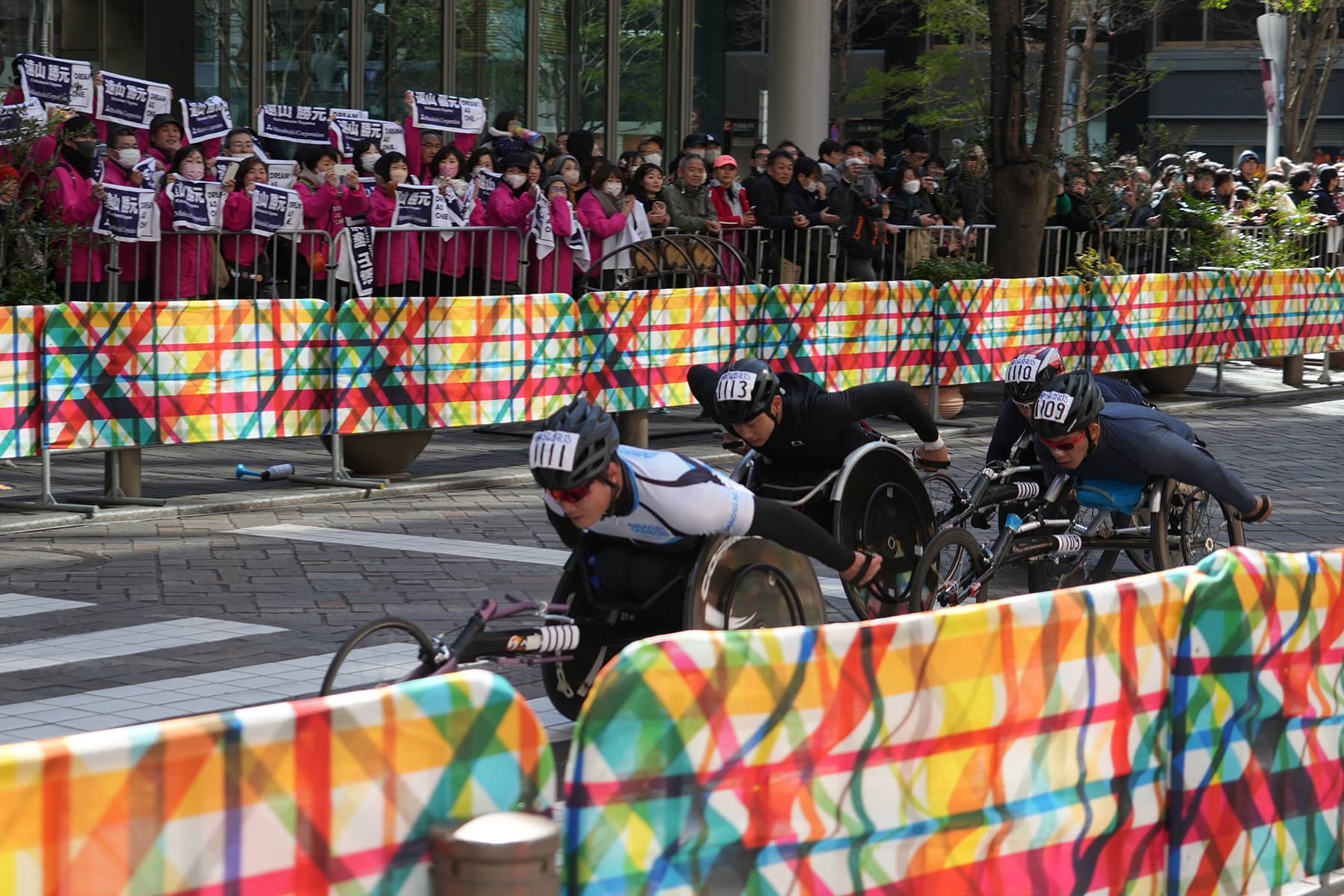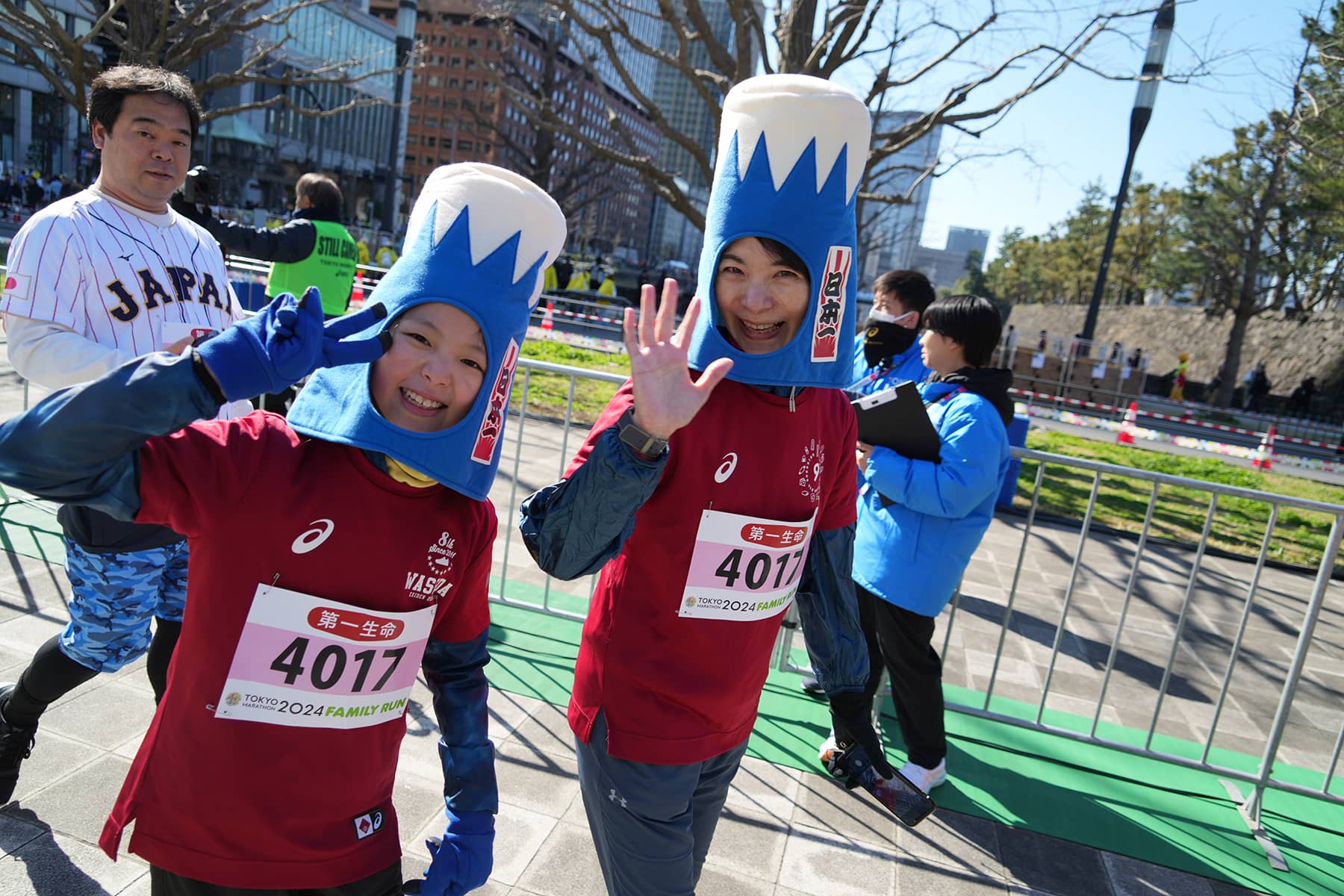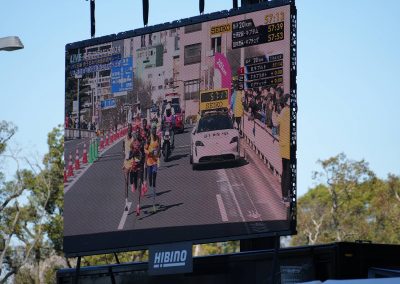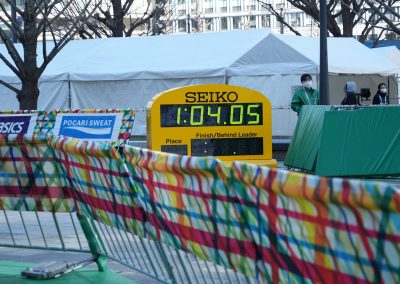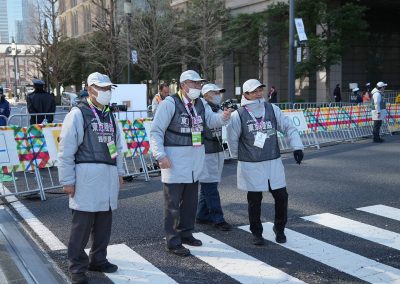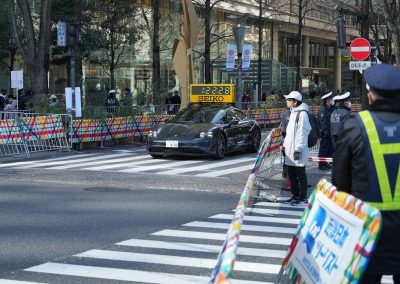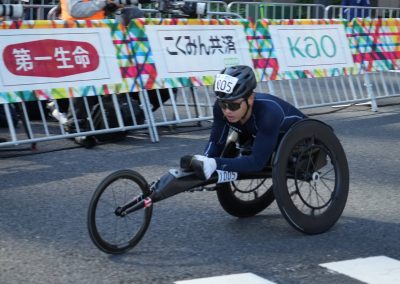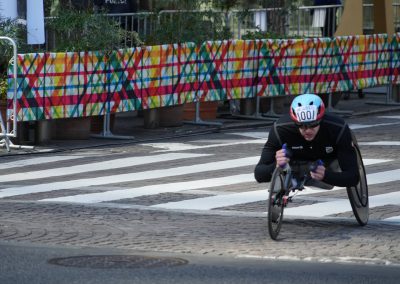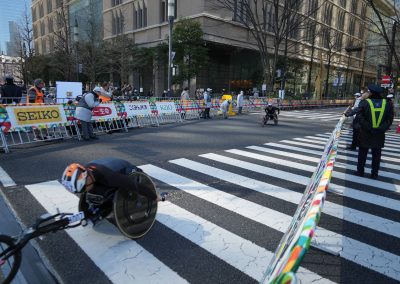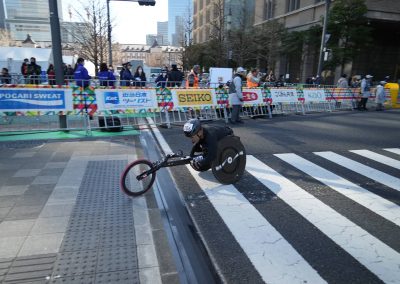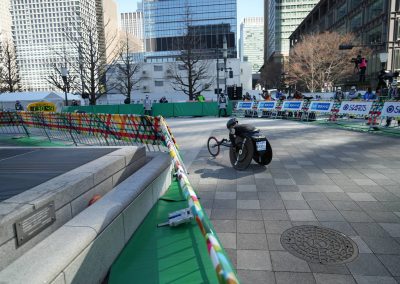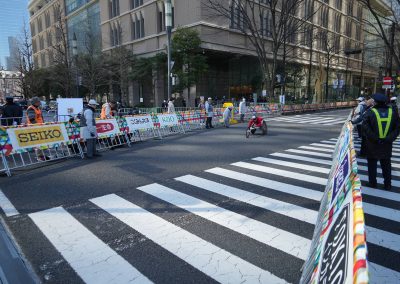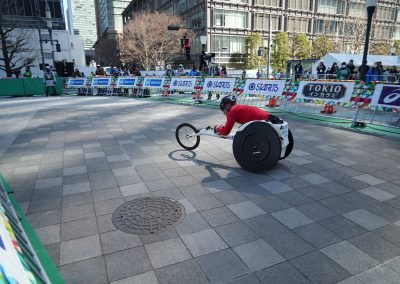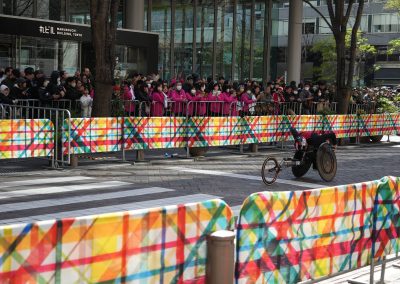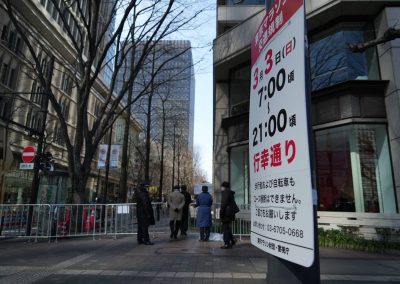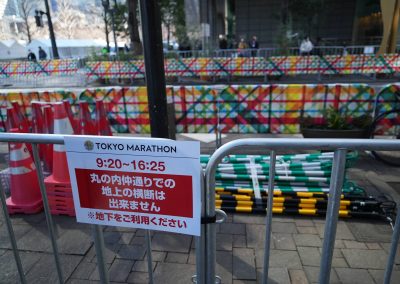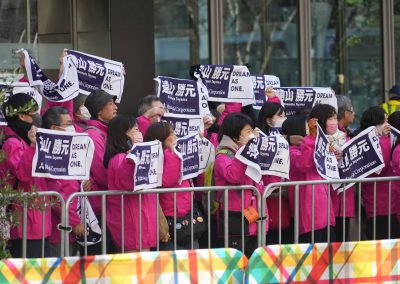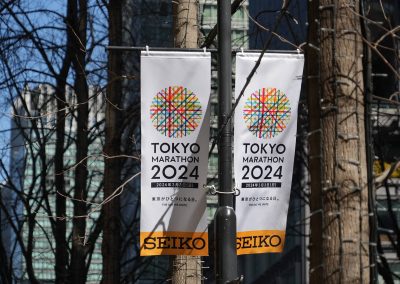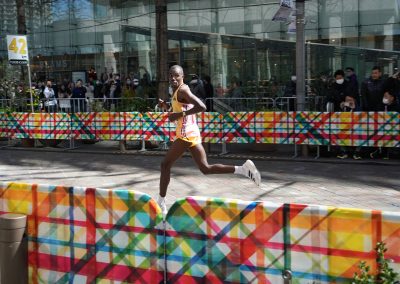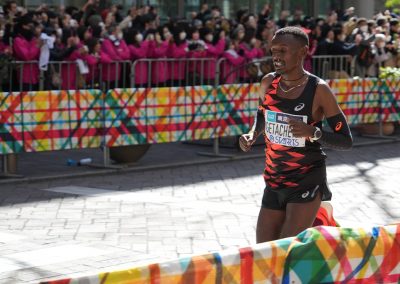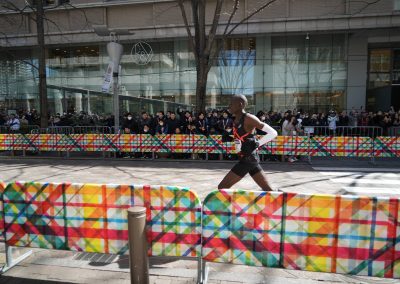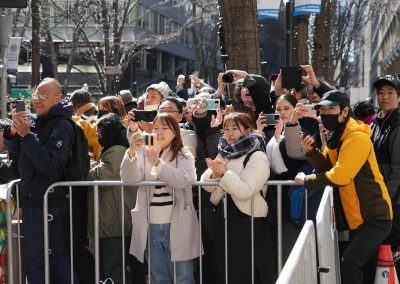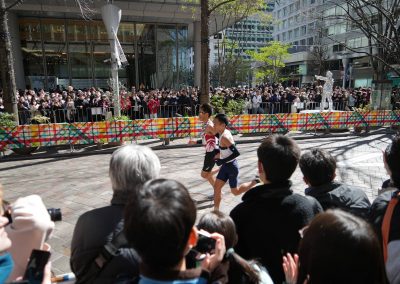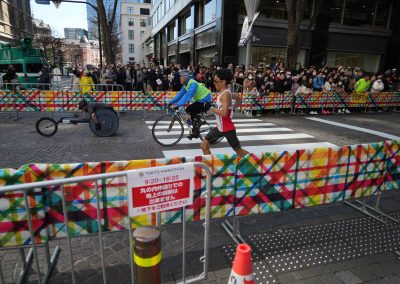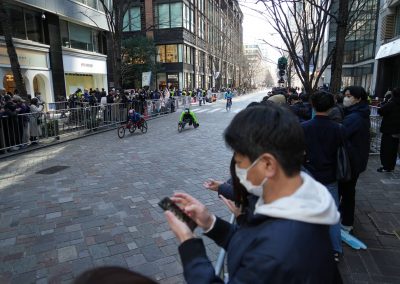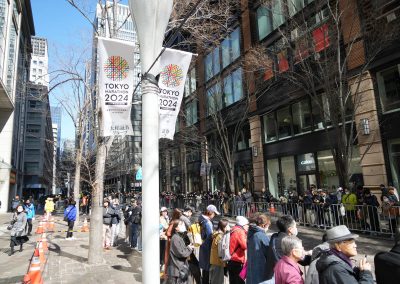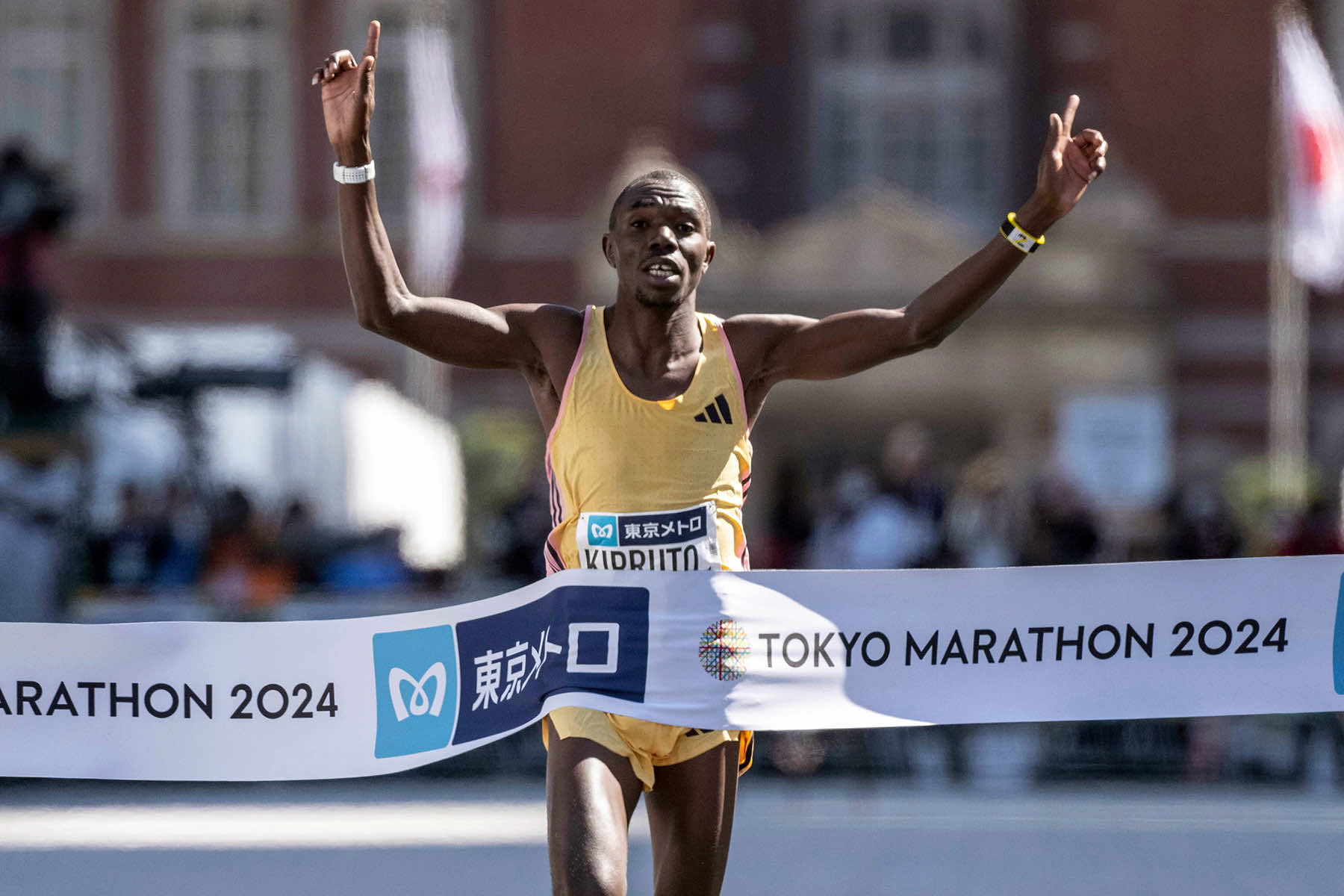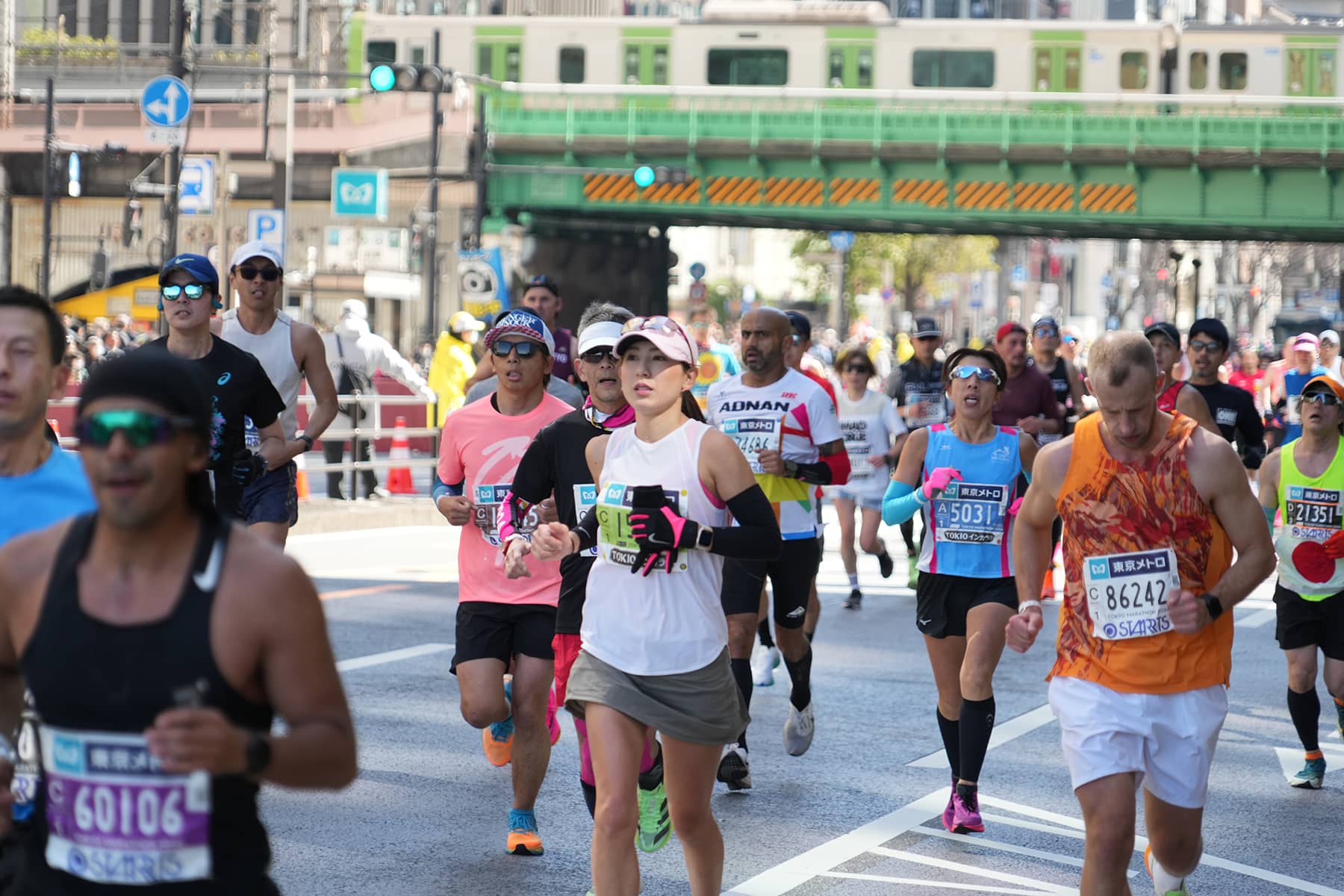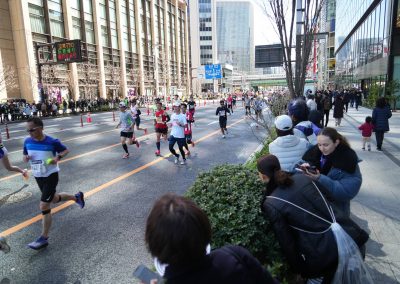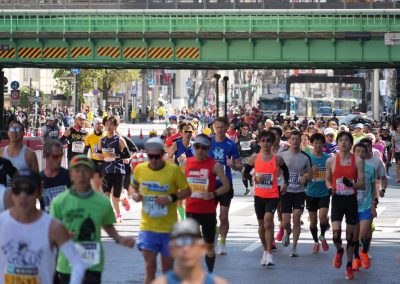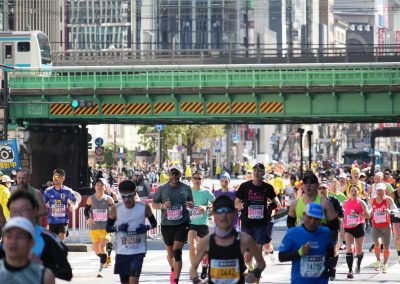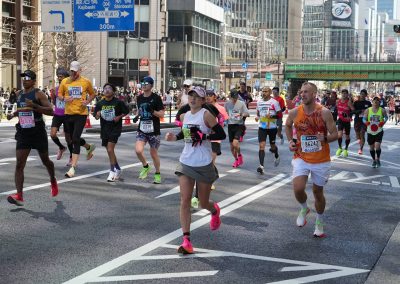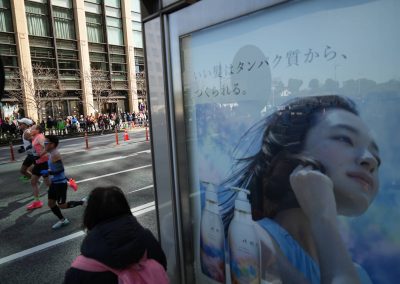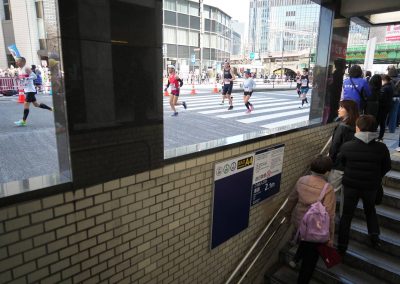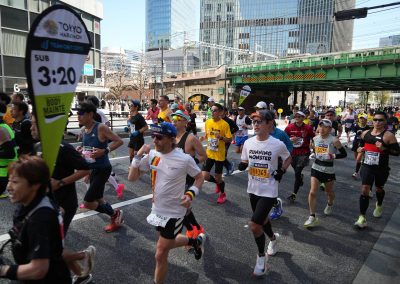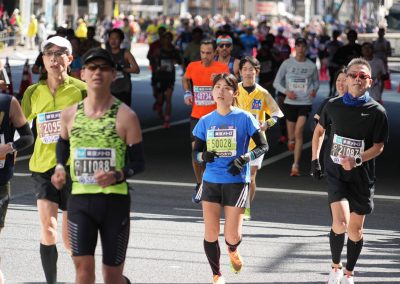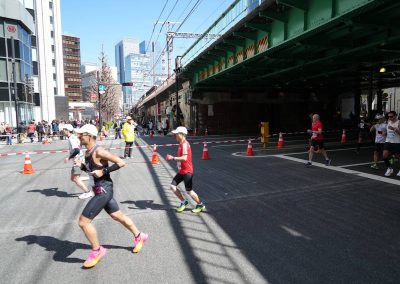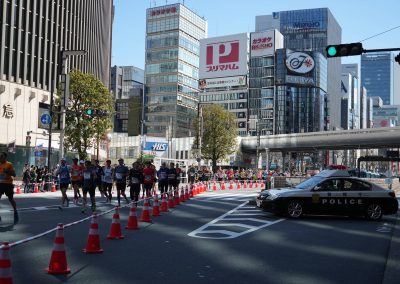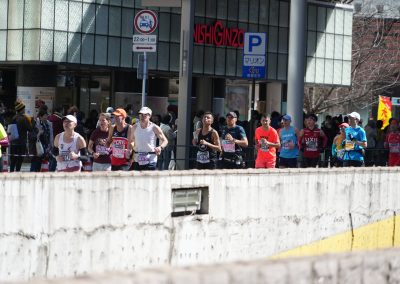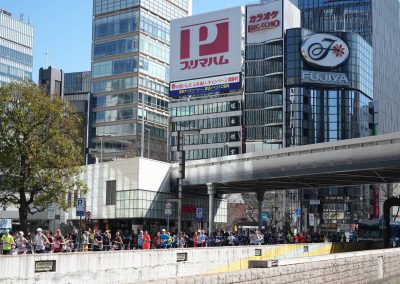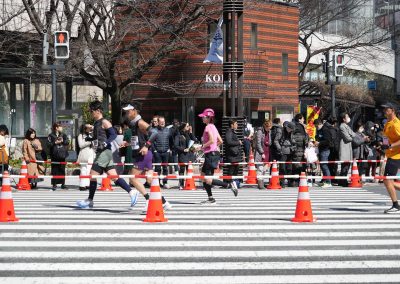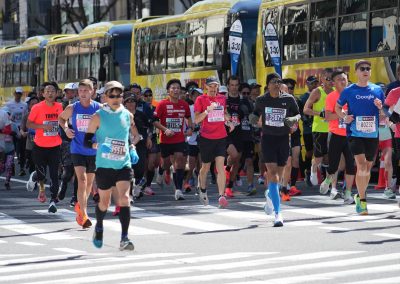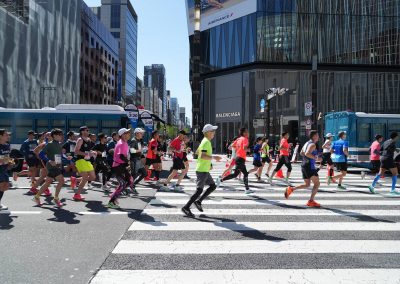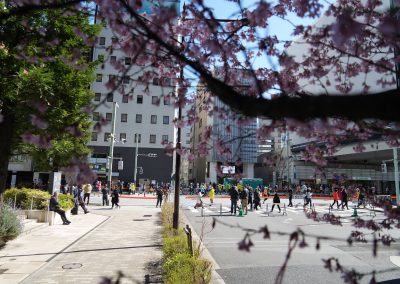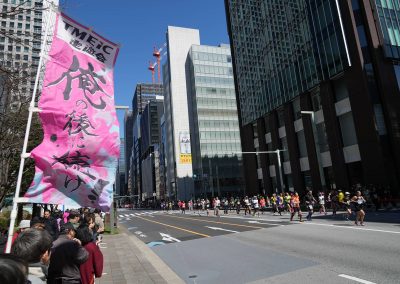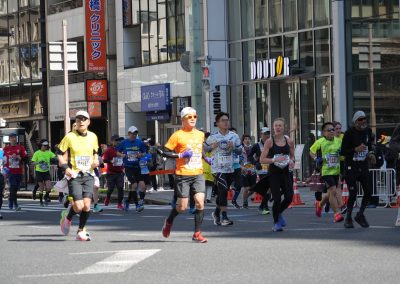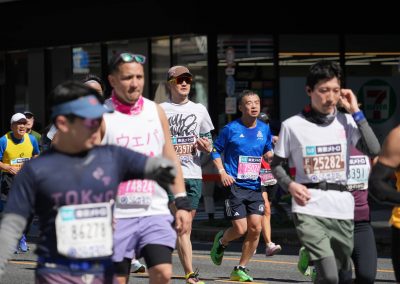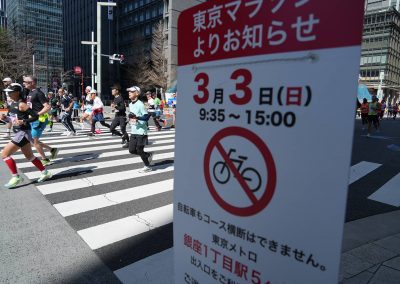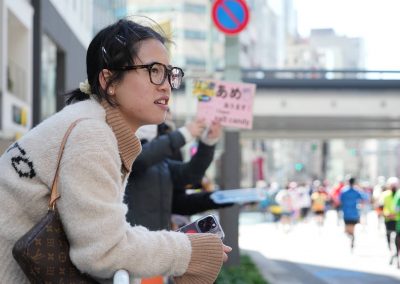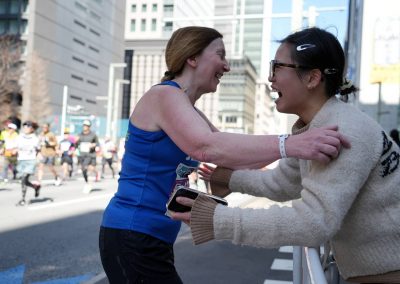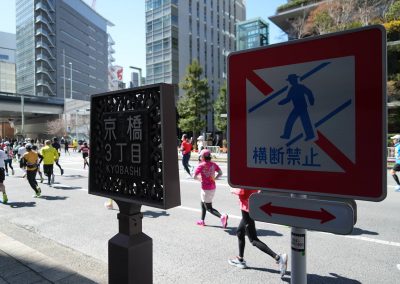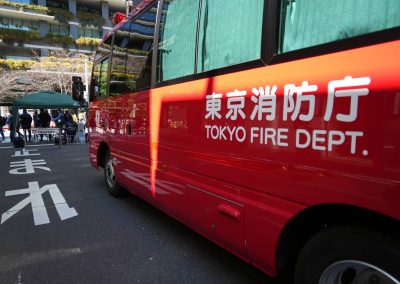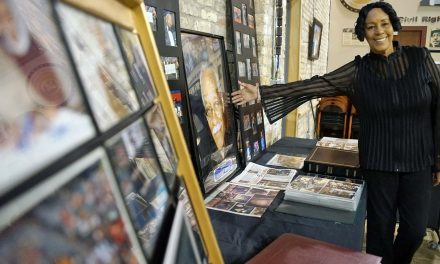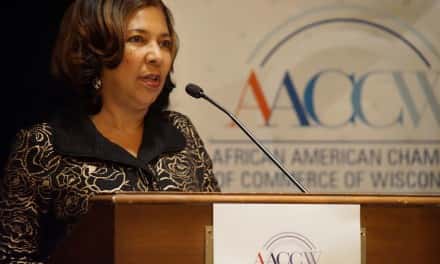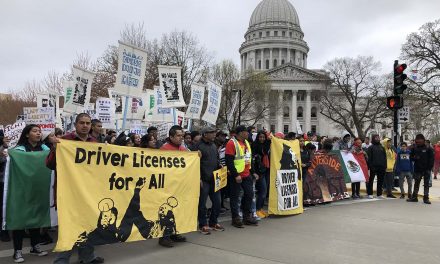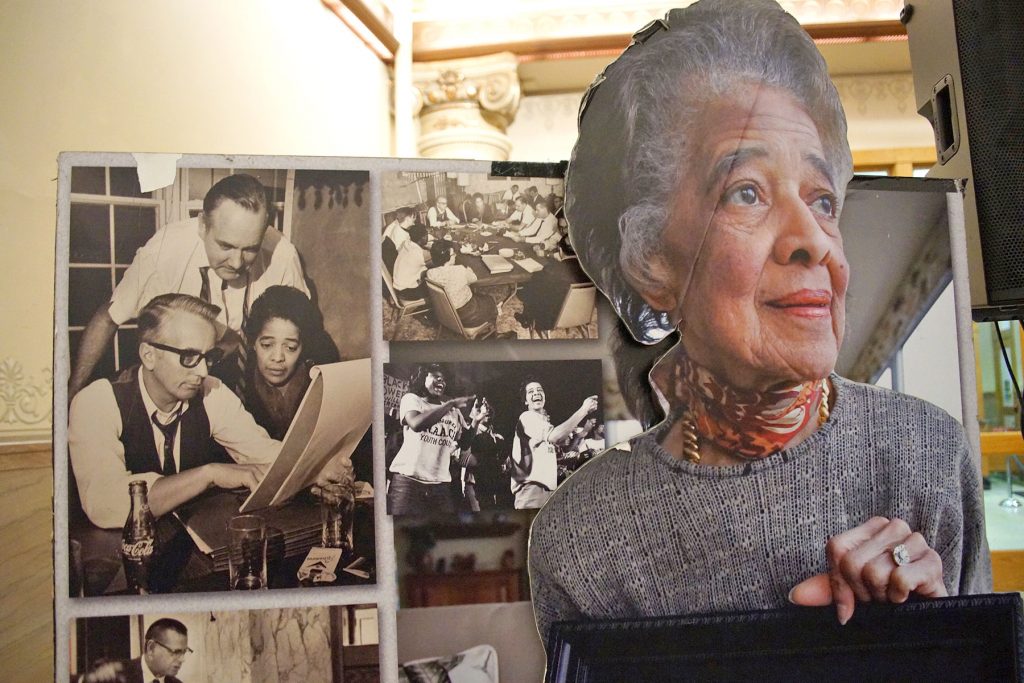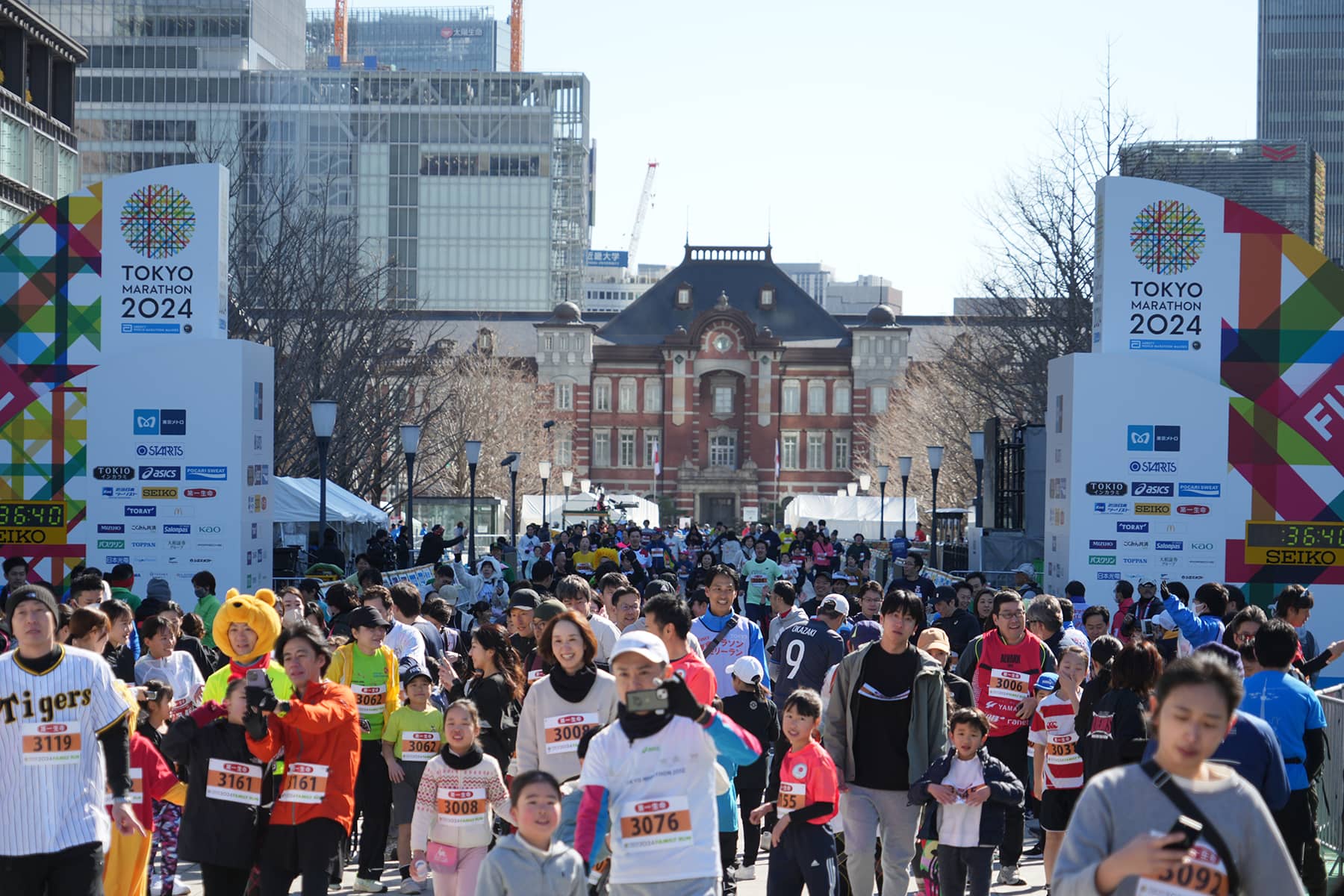
The Tokyo Marathon is one of the six World Marathon Majors, alongside races in Boston, New York City, Chicago, Berlin, and London. For 2024 it was held on March 3, which coincided with the “Milwaukee Independent” team being in Tokyo just before leaving on a special assignment in Fukushima.
Since its inception in 2007, the Tokyo Marathon has grown in popularity, attracting tens of thousands of runners from around the world. Participants compete for various titles and qualifying times, and the event also serves as a selection trial for Japanese athletes for international competitions.
The marathon’s course main course of 26.219 miles weaves through the city, showcasing Tokyo’s modern and historic sites, starting from the Tokyo Metropolitan Government Building in Shinjuku and ending near the Imperial Palace. Stops along the way include Nihonbashi, Asakusa, Ginza, Hibiya Park, and Tokyo Station.
Benson Kipruto of Kenya clinched his first victory in the prestigious race. His finishing time of 2:02:16 not only shattered the course record but also marked the fastest marathon time ever recorded in Japan. The results positioned him as the fifth fastest globally. The victory added to Kipruto’s impressive portfolio, including wins at the Boston Marathon 2021 and Chicago Marathon 2022.
The Milwaukee Independent team on assignment in Japan was not originally scheduled to report on the event or take photos of it. But on the flight from Chicago to Haneda, many marathon participants shared their joy and anticipation of the upcoming challenge.
With Shinkansen seats reserved from Tokyo to Ichinoseki on Monday, March 4, race day happened to be a free day. With Milwaukee Independent’s hotel mere blocks from Tokyo Station and the Marathon’s finish line, it would have been impossible to avoid the event on that Sunday.
Senior photojournalist Lee Matz was able to capture intimate moments of the race from official media areas, including Kipruto as he reached the finish line. Relocating to other spots around the city to document different scenes came with many logistical challenges.
Aside from the distance, crossing the blocked streets meant navigating the subway tunnels. More than a few times a direction was chosen in error, but the happy result led to rare photographic opportunities.
This collection of images shares what that day in Tokyo was like, as thousands of marathon participants from around the world ran for miles through the heart of Japan’s capital.
3.11 Exploring Fukushima
- Journey to Japan: A photojournalist’s diary from the ruins of Tōhoku 13 years later
- Timeline of Tragedy: A look back at the long struggle since Fukushima's 2011 triple disaster
- New Year's Aftershock: Memories of Fukushima fuels concern for recovery in Noto Peninsula
- Lessons for future generations: Memorial Museum in Futaba marks 13 years since 3.11 Disaster
- In Silence and Solidarity: Japan Remembers the thousands lost to earthquake and tsunami in 2011
- Fukushima's Legacy: Condition of melted nuclear reactors still unclear 13 years after disaster
- Seafood Safety: Profits surge as Japanese consumers rally behind Fukushima's fishing industry
- Radioactive Waste: IAEA confirms water discharge from ruined nuclear plant meets safety standards
- Technical Hurdles for TEPCO: Critics question 2051 deadline for decommissioning Fukushima
- In the shadow of silence: Exploring Fukushima's abandoned lands that remain frozen in time
- Spiral Staircase of Life: Tōhoku museums preserve echoes of March 11 for future generations
- Retracing Our Steps: A review of the project that documented nuclear refugees returning home
- Noriko Abe: Continuing a family legacy of hospitality to guide Minamisanriku's recovery
- Voices of Kataribe: Storytellers share personal accounts of earthquake and tsunami in Tōhoku
- Moai of Minamisanriku: How a bond with Chile forged a learning hub for disaster preparedness
- Focus on the Future: Futaba Project aims to rebuild dreams and repopulate its community
- Junko Yagi: Pioneering a grassroots revival of local businesses in rural Onagawa
- Diving into darkness: The story of Yasuo Takamatsu's search for his missing wife
- Solace and Sake: Chūson-ji Temple and Sekinoichi Shuzo share centuries of tradition in Iwate
- Heartbeat of Miyagi: Community center offers space to engage with Sendai's unyielding spirit
- Unseen Scars: Survivors in Tōhoku reflect on more than a decade of trauma, recovery, and hope
- Running into history: The day Milwaukee Independent stumbled upon a marathon in Tokyo
- Roman Kashpur: Ukrainian war hero conquers Tokyo Marathon 2024 with prosthetic leg
- From Rails to Roads: BRT offers flexible transit solutions for disaster-struck communities
- From Snow to Sakura: Japan’s cherry blossom season feels economic impact of climate change
- Potholes on the Manga Road: Ishinomaki and Kamakura navigate the challenges of anime tourism
- The Ako Incident: Honoring the 47 Ronin’s legendary samurai loyalty at Sengakuji Temple
- "Shōgun" Reimagined: Ambitious TV series updates epic historical drama about feudal Japan
- Enchanting Hollywood: Japanese cinema celebrates Oscar wins by Hayao Miyazaki and Godzilla
- Toxic Tourists: Geisha District in Kyoto cracks down on over-zealous visitors with new rules
- Medieval Healing: "The Tale of Genji" offers insight into mysteries of Japanese medicine
- Aesthetic of Wabi-Sabi: Finding beauty and harmony in the unfinished and imperfect
- Riken Yamamoto: Japanese architect wins Pritzker Prize for community-centric designs
MI Staff (Japan)
Lее Mаtz
Kimimasa Mayama (AP), Yuichi Yamazaki (AP), and Yue Chenxing (AP)
3.11 Exploring Fukushima: The Tōhoku region of Japan experienced one of the worst natural disasters ever recorded when a powerful earthquake was followed by a massive tsunami, and triggered an unprecedented nuclear crisis in 2011. With a personal connection to the tragedies, Milwaukee Independent returned for the first time in 13 years to attend events commemorating the March 11 anniversary. The purpose of the journalism project included interviews with survivors about their challenges over the past decade, reviews of rebuilt cities that had been washed away by the ocean, and visits to newly opened areas that had been left barren by radiation. This special editorial series offers a detailed look at a situation that will continue to have a daily global impact for generations. mkeind.com/exploringfukushima

